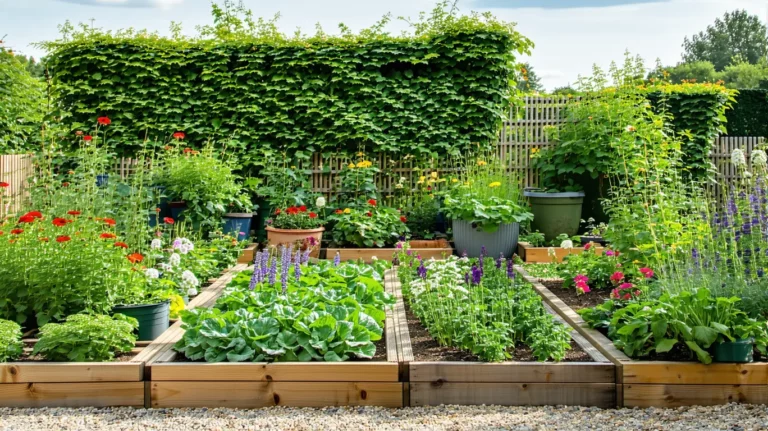
Spring Gardening 2025: Maximizing Your Garden’s Potential in the New Season
Summary of this article
Climate Considerations for Spring 2025
This spring has presented unique weather patterns across different regions of the United States. The National Weather Service reports that:
- Northeast: Slightly warmer than average temperatures with more frequent rainfall
- Southeast: Earlier warm weather with potential drought conditions in some areas
- Midwest: Normal temperatures with increased precipitation
- Southwest: Continued drought conditions requiring water conservation
- Northwest: Cooler temperatures persisting with adequate moisture levels
- Alaska: Later spring thaw than previous years
- Hawaii: Typical tropical conditions with potential for heavy rainfall
Understanding your local climate patterns is essential for successful spring gardening. Be prepared to adapt your planting schedule accordingly.
Soil Preparation: The Foundation of Garden Success
Before diving into planting, invest time in preparing your soil. The quality of your soil directly influences your garden’s productivity.
Testing Your Soil
Start with a comprehensive soil test to determine:
- pH levels (most vegetables prefer 6.0-7.0)
- Nutrient profiles
- Organic matter content
- Drainage qualities
Many county extension offices offer affordable soil testing services, or you can purchase home test kits from garden centers.
Amending Your Soil
Based on your soil test results, incorporate appropriate amendments:
For Clay Soils:
- Add coarse sand to improve drainage
- Incorporate abundant organic matter to break up compaction
- Consider raised beds to overcome drainage issues
For Sandy Soils:
- Add generous amounts of compost to improve water retention
- Consider coconut coir as a sustainable alternative to peat moss
- Apply organic mulch to preserve moisture
For Balanced Soils:
- Maintain with regular additions of compost
- Apply a light layer of worm castings for micronutrients
- Rotate cover crops in fallow areas
Pro Tip: Avoid working soil when it’s too wet. Squeeze a handful of soil—if it forms a ball that breaks apart when poked, it’s ready to work. If it stays in a muddy clump, wait for it to dry further.
Regional Planting Guides for April 2025
Northeast (Zones 3-7)
Early April:
- Sow cold-hardy greens (spinach, kale, arugula)
- Plant potatoes and onion sets
- Transplant cold-tolerant brassicas (broccoli, cabbage)
Late April:
- Sow root vegetables (carrots, radishes, beets)
- Plant peas and fava beans
- Start warm-season plants indoors (tomatoes, peppers, eggplants)
Southeast (Zones 7-10)
Early April:
- Transplant warm-season vegetables (tomatoes, peppers)
- Sow cucumbers, squash, and melons
- Plant sweet potatoes
Late April:
- Establish heat-loving herbs (basil, oregano, rosemary)
- Sow okra, southern peas, and lima beans
- Install heat-tolerant flowers
Midwest (Zones 4-6)
Early April:
- Plant potatoes, onions, and cool-season greens
- Sow root crops and peas
- Transplant broccoli and cauliflower
Late April:
- Begin hardening off warm-season seedlings
- Plant successive rounds of lettuce and spinach
- Install strawberry plants
Southwest (Zones 8-10)
Early April:
- Plant heat-tolerant vegetables before intense heat arrives
- Establish drought-resistant herbs
- Sow melons and squash
Late April:
- Transition to heat-loving crops
- Install sunshades for sensitive plants
- Focus on water-wise gardening practices
Northwest (Zones 6-9)
Early April:
- Plant cool-season crops (lettuce, peas, brassicas)
- Install berry bushes and fruit trees
- Sow root vegetables
Late April:
- Begin hardening off warm-season seedlings
- Plant successive sowings of greens
- Transplant flowers for pollinators
Sustainable Gardening Practices for 2025
Water Conservation Techniques
With drought conditions affecting many regions, water conservation is more important than ever:
- Drip Irrigation Systems
- Deliver water directly to plant roots
- Reduce water usage by up to 70% compared to sprinklers
- Can be automated with smart controllers
- Rainwater Harvesting
- Install rain barrels or cisterns to collect roof runoff
- Use collected water during dry periods
- Reduce dependency on municipal water supplies
- Mulching Strategies
- Apply 2-3 inches of organic mulch around plants
- Reduce evaporation and suppress weeds
- Choose appropriate mulch for your climate (wood chips in humid areas, rock mulch in dry regions)
Integrated Pest Management (IPM)
Modern gardening approaches favor ecological pest control methods:
| Pest Control Method | Benefits | Best For |
|---|---|---|
| Beneficial Insects | Natural predation, sustainable | Aphids, caterpillars, scale insects |
| Physical Barriers | Chemical-free, effective | Cabbage moths, carrot flies |
| Companion Planting | Enhances biodiversity, deters pests | Most garden plots |
| Organic Sprays | Minimal environmental impact | Targeted pest problems |
| Trap Crops | Draws pests away from main crops | Cucumber beetles, squash bugs |
Recent studies from the University of California show that gardens using IPM techniques yield 15% more produce while reducing pesticide use by 70%.
Garden Technology Trends for 2025
Smart Garden Systems
Technology continues to transform home gardening with innovations like:
- Soil Moisture Sensors that connect to your smartphone, providing real-time data on when to water
- Weather-Responsive Irrigation Controllers that automatically adjust watering schedules based on local conditions
- Garden Planning Apps with AI features that suggest optimal plant placement and companion planting schemes
- Plant Identification Tools that diagnose diseases and nutrient deficiencies through smartphone photos
Vertical Growing Systems
Limited space gardening has evolved with new vertical growing solutions:
- Hydroponic tower gardens that can produce leafy greens year-round
- Living wall systems with integrated irrigation
- Stackable container designs for balconies and small yards
- Trellises and supports made from sustainable materials
Vegetable Varieties Trending in 2025
This spring has seen renewed interest in these vegetable varieties:
Heritage and Heirloom Varieties
- ‘Dragon’s Tongue’ Bush Beans – Flat, purple-streaked pods with exceptional flavor
- ‘Glass Gem’ Corn – Stunningly colorful kernels, perfect for ornamental and grinding uses
- ‘Brandywine’ Tomatoes – Classic heirloom with rich, complex flavor
- ‘Cosmic Purple’ Carrots – Purple exterior with orange core, high in anthocyanins
Climate-Adaptive Varieties
- ‘Heat Wave II’ Tomatoes – Bred to set fruit even in high temperatures
- ‘Drought Master’ Zucchini – Requires 40% less water than traditional varieties
- ‘Cold Snap’ Peas – Can withstand late frosts and cool soil conditions
- ‘Desert Survivor’ Peppers – Thrives in hot, arid conditions
Creating Wildlife-Friendly Gardens
Pollinators and Beneficial Insects
Support crucial pollinators by incorporating:
- Native Wildflowers that bloom throughout the season
- Pollinator Hotels providing habitat for solitary bees
- Shallow Water Sources with landing spots for insects
- Flowering Herbs like thyme, oregano, and lavender
A 2024 study from the Xerces Society found that home gardens with at least 12 native plant species increased local pollinator populations by 30%.
Birds and Beneficial Wildlife
Attract helpful wildlife with:
- Bird Baths and Water Features
- Native Fruit-Bearing Shrubs
- Nesting Materials and Locations
- Perching Spots for insect-eating birds
Extending Your Growing Season
Season Extension Techniques
Maximize your garden’s productive period with:
- Cold Frames
- Extend harvests of cold-hardy crops
- Protect spring seedlings from late frosts
- Create microclimate for early planting
- Row Covers
- Lightweight protection from insects and mild frosts
- Easy to remove for pollination
- Allows for earlier planting dates
- Succession Planting
- Plant new crops as others finish
- Ensure continuous harvests
- Maximize space efficiency
Community Gardening Initiatives
Neighborhood Seed Exchanges
The spring of 2025 has seen a resurgence in community seed exchanges:
- Organize or participate in local seed swaps
- Share successful varieties adapted to your microclimate
- Preserve agricultural diversity
- Build community resilience
Community Garden Innovations
Recent trends in community gardening include:
- Intergenerational Garden Programs pairing seniors with school children
- Food Forest Projects creating edible landscapes in public spaces
- Garden-to-Food Bank Partnerships addressing food insecurity
- Climate Victory Gardens focusing on carbon sequestration and climate resilience
Growing Forward
As you embrace the spring 2025 gardening season, remember that your garden is both a personal sanctuary and part of a larger ecosystem.
By implementing sustainable practices, choosing appropriate plants for your region, and sharing your knowledge with others, you contribute to a healthier planet and more resilient food system.
Whether you’re growing a few herbs on a windowsill or managing an expansive garden plot, each plant you nurture makes a positive difference. Happy gardening this spring!



Laisser votre commentaire